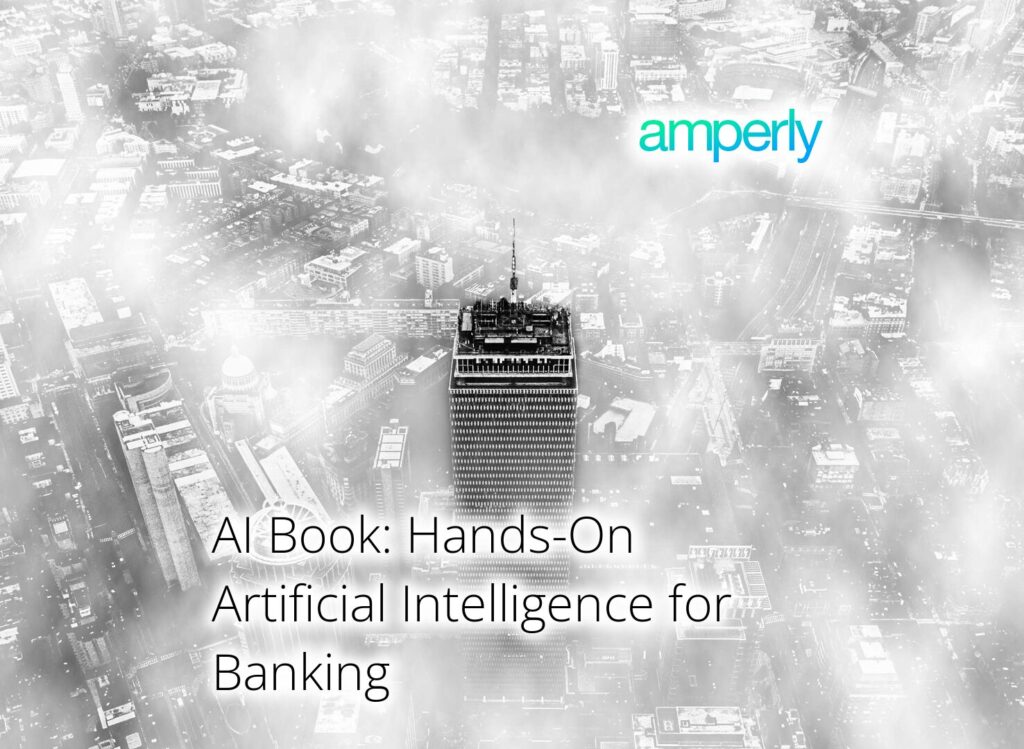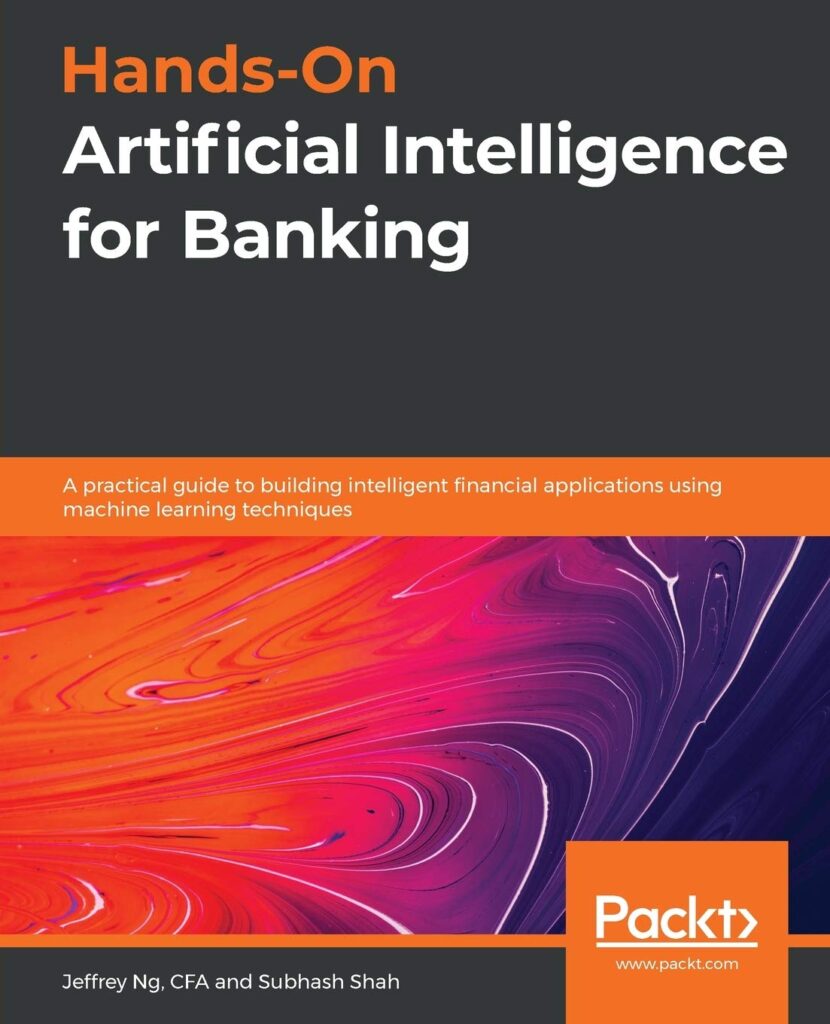Your bank needs actionable tools, not theories. Time series models forecast client demand, optimizing outreach and boosting retention. Reinforcement learning improves loan pricing by balancing risk and profitability in real time. These methods replace manual processes with consistent, efficient decision-making that directly impacts revenue. Check out Hands-On Artificial Intelligence for Banking.

Generative AI in banking isn’t just helping banks keep up, it’s pushing them forward. With the ability to add $200–$340 billion annually, AI is more than a tool, it’s a revenue driver.
Real financial data powers these solutions. Neural networks enhance portfolio management by dynamically adjusting asset allocations based on market trends. Graph databases uncover hidden patterns in customer transactions, improving fraud detection and customer segmentation. These AI-driven tools not only solve specific problems but also make banking operations smarter and more scalable.

Check out Hands-On Artificial Intelligence for Banking.
Highlight the book’s focus on practical AI applications in banking
This book is built around practical, hands-on AI applications specifically for banking. It covers real-world use cases like demand forecasting, risk assessment, and portfolio optimization, which banks are actively using today. With Python-based examples, it shows you how to automate commercial banking processes, implement AI models, and even build personal wealth advisors. By focusing on direct applications, it skips the fluff and gets straight to techniques that help improve profitability, reduce costs, and make services more accessible. It’s not theory—it’s actionable steps backed by the latest tools and methods.
Briefly note the emphasis on real financial data and Python-based models
Real financial data is at the center of every example, ensuring relevance to actual banking operations. The book explains how to work with commercial and open datasets, like those from Quandl, and integrate them into AI models using Python. It also walks through practical tools like Keras, reinforcement learning, and sentiment analysis tied to platforms like Twitter. This practical approach not only makes the content relatable but also equips you with code examples and GitHub repositories to get started immediately. Readers can test, modify, and directly apply the techniques in their own environments.
Understanding key financial data sources (open, commercial, internal)
Understanding where to find reliable financial data is step one. The book outlines three primary sources: open datasets like Quandl, commercial data providers, and internal banking systems. Each has unique advantages—open data is accessible, commercial sources are often comprehensive, and internal systems offer direct insights into customer behavior. For example, Quandl provides market data you can use to train machine learning models for forecasting or risk analysis. Knowing when to use each source ensures you work with accurate, actionable data that fits your project’s goals.
Reviewing time series analysis and neural network fundamentals
Time series analysis is essential for banking tasks like predicting stock prices or managing liquidity. The book covers techniques like ARIMA for trend detection and neural networks for advanced forecasting. Neural networks, especially in Python frameworks like Keras, add layers of prediction accuracy by capturing nonlinear patterns in financial data. For instance, combining historical time series data with neural network models allows you to improve demand forecasts for commodities or services. These tools help automate decisions, saving time and reducing guesswork.
Reinforcement learning approaches to pricing and lending decisions
Practical Banking AI Applications
Client Procurement Automation via Time Series Modeling
Automating client procurement is made easier with time series modeling. By using methods like ARIMA or advanced neural networks, you can forecast customer demand and predict when and how clients will engage. For example, the book outlines how Python-based models can handle large datasets, like transaction histories, to spot patterns and optimize timing for outreach. This isn’t just about efficiency—it directly impacts how banks align services with customer needs, improving profitability and retention. Ready to take your customer engagement to the next level?
Loan Pricing and Funding Decisions Driven by Machine Learning
Machine learning drives smarter decisions in loan pricing and funding. Algorithms analyze risk, interest rates, and customer credit profiles in real-time to set optimal terms. The book explains how reinforcement learning models simulate scenarios to maximize profit while minimizing default risks. This approach not only improves accuracy but also reduces reliance on manual processes. Banks using these techniques see profit boosts of 9–15%, highlighting the economic payoff of integrating AI into lending strategies.
Portfolio Management Guided by Treynor-Black Model Integrated with Deep Learning
The Treynor-Black model, paired with deep learning, brings precision to portfolio management. By combining historical market data with predictive neural networks, the model identifies optimal asset allocations to reduce risk while improving returns. For instance, the book demonstrates how Python-based ResNet frameworks analyze financial trends to optimize portfolio weightings. This method goes beyond traditional finance approaches, offering dynamic updates that adapt to real-world market shifts. Interested in smarter investment strategies?
Predicting Market Movements and Investment Banking Trends
AI excels at predicting market trends, whether for stocks or macroeconomic indicators. With convolutional neural networks, the book shows how to analyze price trends and trading volumes to predict future market movements. These tools help investment bankers identify opportunities in IPOs or mergers with greater accuracy. By applying these models, banks can improve forecasting, streamline decision-making, and act faster than competitors. Want to predict the next market move before it happens? This is where you start.
Banking AI Specialized Techniques and Tools
Sentiment Analysis Using Twitter Feeds and Python Libraries
Sentiment analysis transforms social media chatter into actionable insights. The book shows how to extract Twitter data, convert it into structured records, and analyze sentiment using Python libraries like NLP-based tools. For example, Python scripts can link daily sentiment scores to real-time market prices, helping predict trends or assess public reactions to events. This data is invaluable for algorithmic marketing and investment strategies. Start leveraging these insights to better align your decisions with market sentiment.
Graph-Based Data Storage and Retrieval for Customer Insights
Graph databases like Neo4j offer unmatched capabilities for storing and querying customer data. The book explains how to structure relationships, such as mapping customer transaction histories or network connections, into graph-based systems. By using Python and libraries like NetworkX, you can extract patterns that traditional databases miss, like identifying high-value customers or fraud rings. This method delivers deeper insights, making customer segmentation and fraud detection far more effective.
Building Wealth Advisory Services Through Open Bank APIs
Open Bank APIs make it easy to create personalized wealth advisory tools. The book demonstrates how APIs can access financial data, combine it with machine learning models, and deliver tailored advice for customers. Steps include using Flask and MongoDB to build smart systems that forecast cash flow or track expenses. These services make financial management seamless and more intuitive for end users. Ready to offer clients smarter, AI-driven financial advice? Here’s your roadmap.
AI in Banking Strategic Insights
Identifying Cost Efficiencies and Increased Accessibility for Clients
Artificial intelligence for banking helps cut costs while making services more accessible. The book explains how open-source software and data improve efficiency without sacrificing quality. By automating processes like loan approvals or fraud detection, banks reduce manual work and save on operational expenses. Clients benefit too, with faster responses and personalized experiences driven by AI models. The combination of lower costs and better access makes these tools indispensable for modern banking.
Scaling Solutions from Retail to Investment Banking Operations
artificial intelligence for banking with different solutions scale seamlessly across different banking sectors. For example, tools designed for retail customer segmentation can adapt to investment banking by analyzing large datasets for mergers or IPOs. The book shows how to apply Python libraries to tackle diverse financial problems, creating scalable frameworks. Whether it’s automating retail banking workflows or optimizing investment strategies, these approaches improve efficiency across the board. Ready to apply artificial intelligence for banking at every level of banking?
Applying Domain-Specific Modeling to Address Financial Problems
Domain-specific AI models solve highly targeted problems. The book highlights examples like reinforcement learning for pricing or neural networks for portfolio management. By tailoring models to address credit risk or market forecasting, banks achieve greater precision in decision-making. The use of Python-based tools allows financial experts to customize these models based on unique datasets. This adaptability ensures better outcomes for banks and their clients. Want to know which model suits your needs? Let’s dig into this further.
Looking Ahead: Artificial Intelligence for Banking
Reviewing Real-World Considerations for Model Deployment
AI models succeed only when carefully deployed. The book emphasizes practical steps like ensuring data quality, testing models on real-world banking datasets, and aligning results with compliance standards. It also covers the need for scalable infrastructure, which supports large-scale transactions in real time. Poor deployment practices can lead to inaccurate predictions or operational issues, so taking time to validate models is critical. Ready to avoid common pitfalls?
Aligning Data Engineering Practices with Business Objectives
Data engineering isn’t just about processing information—it’s about meeting business goals. The book highlights how data pipelines should serve tasks like client segmentation, fraud detection, or credit scoring. For example, aligning machine learning outputs with profitability metrics or customer retention KPIs ensures the AI investments pay off. By bridging technical and business requirements, banks maximize the impact of their data strategies. Let’s connect your data with what matters most.
Highlighting Future Directions for AI-Driven Banking Services
AI in banking is only getting started. The book explores advancements like real-time sentiment tracking, deeper integration with Open Banking APIs, and predictive advisory systems. Banks using generative AI sees profit increases of 9–15%, with industry-wide value reaching hundreds of billions annually. Looking ahead, these tools will define everything from customer service to capital allocation. Want to stay ahead in AI-driven finance? This is the moment to act.

